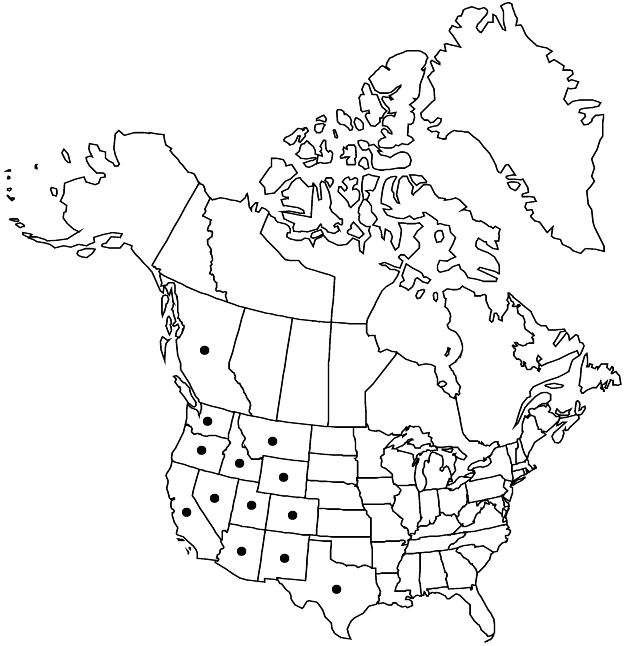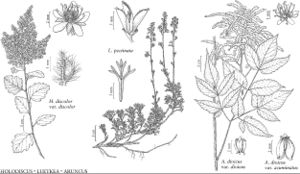Holodiscus discolor var. discolor
Stems 1–6 m. Leaves: long shoots (predominant): petiole distinct, rarely with decurrent blades; blade broadly trullate or ovate to slightly rhombic, maximal width usually in proximal 1/4 of blade, 2–10 × 1–8 cm, base obtuse and truncate, sometimes to slightly acute, apex obtuse; short shoots (absent or not predominant): petiole usually distinct, blade ovate to slightly rhombic, maximal width proximal to midpoint, 2–8 × 1–7 cm, base obtuse and truncate, sometimes acute, margins usually with secondary teeth, apex obtuse. Inflorescences (2–)4–20 × (2–)4–15 cm, multi-branched, dense. 2n = 36.
Phenology: Flowering Apr–Aug.
Habitat: Open woodlands, forest edges, thickets, dry to moist, often partially shaded, rocky slopes
Elevation: 0–3000 m
Distribution

B.C., Ariz., Calif., Colo., Idaho, Mont., Nev., N.Mex., Oreg., Tex., Utah, Wash., Wyo., Mexico (Baja California, Chihuahua, Distrito Federal, Durango, Guanajuato, Nuevo León, Querétaro, San Luis Potosí, Sonora, Zacatecas).
Discussion
As treated here, var. discolor covers wide elevational and latitudinal ranges and displays significant variation. The variety includes populations that might best be segregated to produce a classification within the species that would more precisely reflect the morphologic, ecologic, and geographic patterns observed. In a detailed study of leaf variation and carpel morphology in northeastern Oregon and Washington, C. J. Antieau (1985) found that: phenotype is a reliable indicator of general patterns of genetic divergence; for the characters examined, inherent variation was non-random; and, morphologies observed in field collections were being maintained in cultivation. Although the study by Antieau was on a restricted region of the range of Holodiscus discolor, his observations may be applicable to the species as a whole; infraspecific taxa with consistent phenotypic expressions and genetic bases might be segregated after further study.
Selected References
None.
